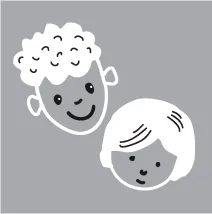
Building Blocks for Teaching Preschoolers with Special Needs
Susan R. Sandall, Ilene S. Schwartz, Gail E Joseph, Ariane N. Gauvreau
- 240 pages
- English
- ePUB (adapté aux mobiles)
- Disponible sur iOS et Android
Building Blocks for Teaching Preschoolers with Special Needs
Susan R. Sandall, Ilene S. Schwartz, Gail E Joseph, Ariane N. Gauvreau
À propos de ce livre
See what's new in the third edition!
Expanded with timely new content and consistent with DEC Recommended Practices, the third edition of this bestselling book will fully prepare a new generation of early childhood educators to teach and include every child. Like the groundbreaking previous editions, this updated Building Blocks guide gives pre? and inservice teachers three types of practical, evidence?based inclusion strategies: curriculum modifications, embedded learning opportunities, and child?focused instructional strategies. Educators will learn how to apply these three strategies for the benefit of all children; review the latest research that supports the Building Blocks model; and find ready?to?use tips and guidance on key topics, such as fostering friendships, encouraging independence, and promoting positive behavior. Reproducible forms help with planning and assessment, and seven comprehensive new training modules make it easy to teach the Building Blocks framework in college courses and professional development sessions.
Equally useful as a student?friendly textbook and a go?to inclusion guide for practicing educators, this is a resource teachers will return to again and again for proven, easy?to?use strategies that support the success of every young learner.
NEW GUIDANCE AND TIPS ON:
- Applying UDL principles to engage every student in your diverse classroom
- Integrating literacy and STEAM into daily activities and routines
- Supporting the executive function skills of all young learners
- Applying new and expanded curriculum modifications
- Collaborating successfully with other team members to ensure the best child outcomes
- Conducting classroom quality assessment
Includes 7 training modules!
- Using the Building Blocks framework
- Conducting ongoing child assessment
- Planning for the individual child
- Using visuals to support learning
- Applying the Building Blocks framework to math and science
- Applying the framework to challenging classroom behavior
- Extending the framework to infants and toddlers
Each module includes a slide deck, presentation notes, learning activities, and a list of other resources and references.
Foire aux questions
Informations


